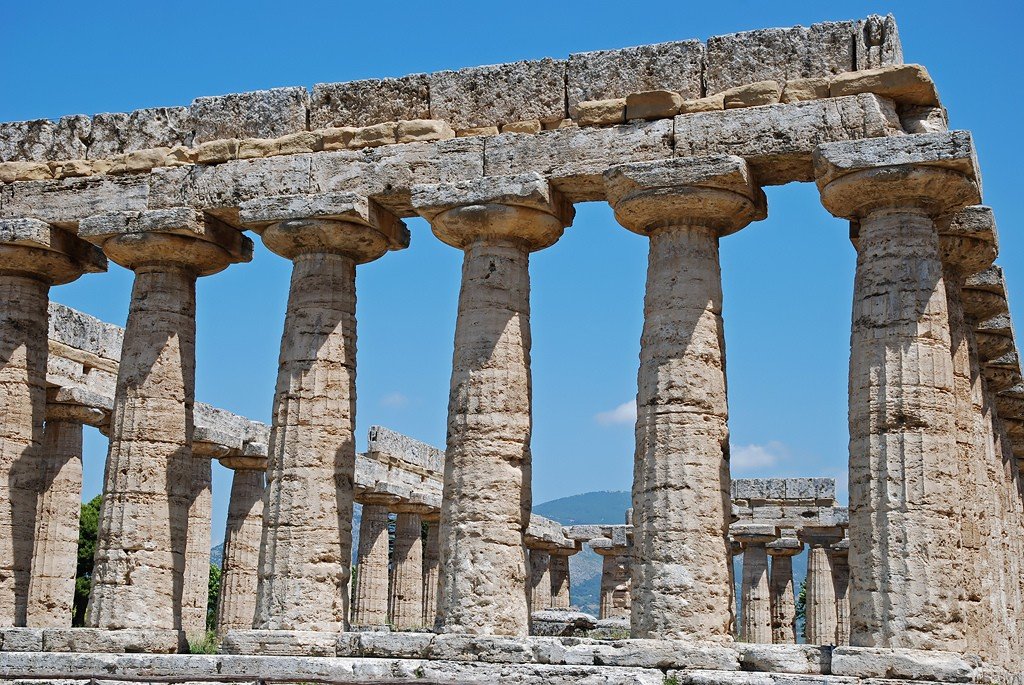The ancient city of Paestum
The majestic ruins of the temples of Paestum are the most significant monument of Greek architecture in Italy. Today it is mainly an agricultural settlement, in the vicinity of which you can see buffaloes grazing: their milk is used to make the much-loved mozzarella cheese.










General information
Pestum is a Greek Sybaric colony founded in the late 7th century BC, originally called Posidonia.
.The ancient city, which to date is only partially discovered, is surrounded by a wall 4.75 km long and about 5 m thick. In some places, the wall with four gates is still in very good condition.
.
The main attraction of Paestum are three Greek temples of Doric style made of yellow travertine. The oldest is a basilica from the 6th century BC. The latest research proves that the temple was dedicated to the goddess Hera. Its columns, nine at the ends and eighteen along the side walls, thick at the bottom thinning to the top. The core of the temple is a two-nave cella (inner sanctuary) of three rooms.
The neighboring temple, mistakenly called at first the temple of Neptune, or Poseidon, was actually also dedicated to Hera. It is the “youngest” and best preserved, it is a magnificent example of austere architecture of the V century BC. The columns, six on each end and fourteen on each side, bear an almost completely preserved system of beams and pediments, and the interior of the temple is divided by two rows of columns into three naves.
About 200 m north of it is the Forum, built by the Romans on the site of the Greek agora. It is surrounded by a portico with nostril columns; it housed the shops of merchants and barterers. Around the Forum were located curia and comitium (places of assembly of the magistrate and citizens), the temple Capitolium (273 BC) and gymnasium. The small amphitheater is now divided by a street. The Greek bouleuterium (city council building) was also rebuilt by the Romans.
>Passing the underground sanctuary, one comes to the Temple of Ceres, which was actually dedicated to Athena. It has six columns at the ends and thirteen at the sides; it is the smallest temple in Paestum. It was probably erected at the end of the 6th century BC. Traces of plastering and painting can be seen on its pediment, which shows a distinctly Ionian influence. The core of the temple consists of a cella with two rooms.
The Museum of Paestum owns a significant collection of Greek and Lower Italic antiquities. Among the exhibits are finds from the burials of the Greek and Lucan necropolis of the 6th- 4th centuries BC. – For example, Attic and Lower Italic vases, statues, jewelry, coins and weapons. Painted stone slabs, walls or lids of crypts are unique. The most famous image, created c. 480 B.C., is found in the “diver’s tomb.” It shows a man who, with his body perfectly stretched out, jumps headfirst (perhaps into the realm of the dead). The fragments of architectural details of the three large temples are very impressive.
.
If you find yourself in the southern part of Italy, be sure to try to stop by Pestum – you won’t regret it.
.